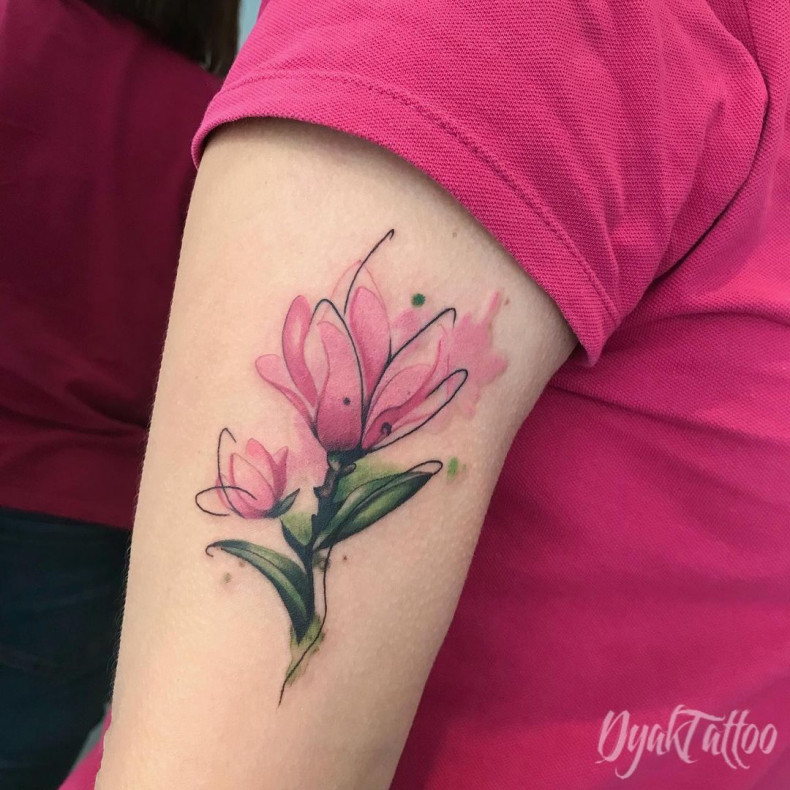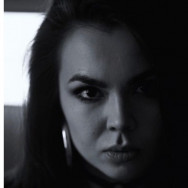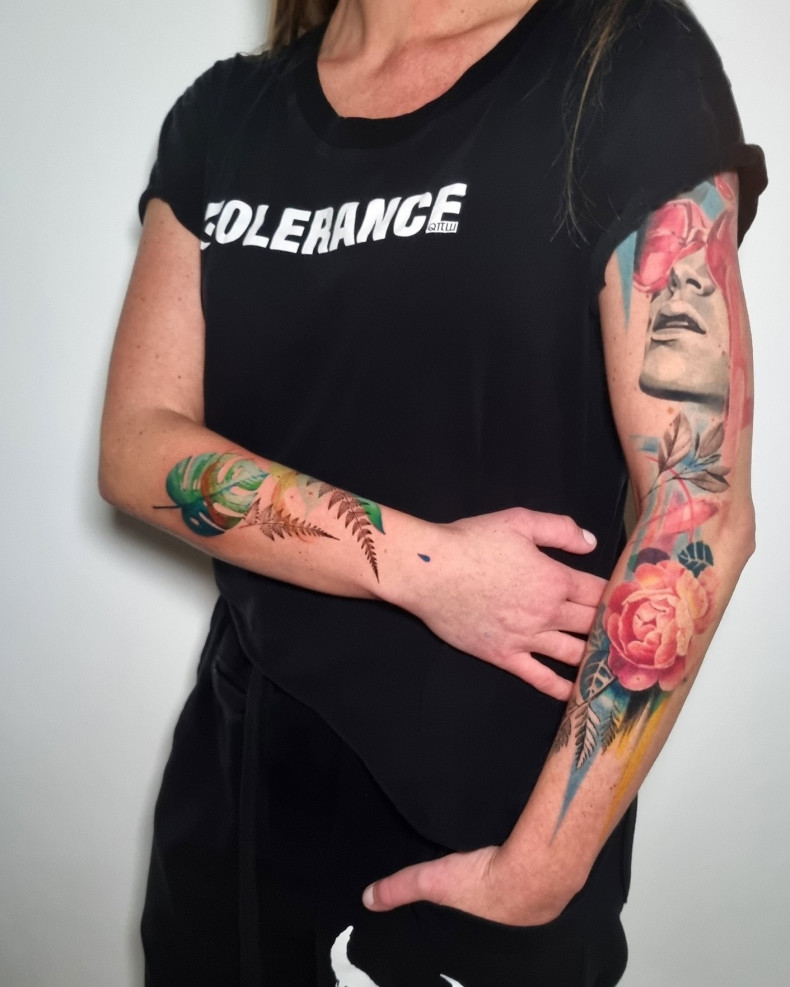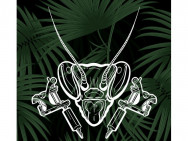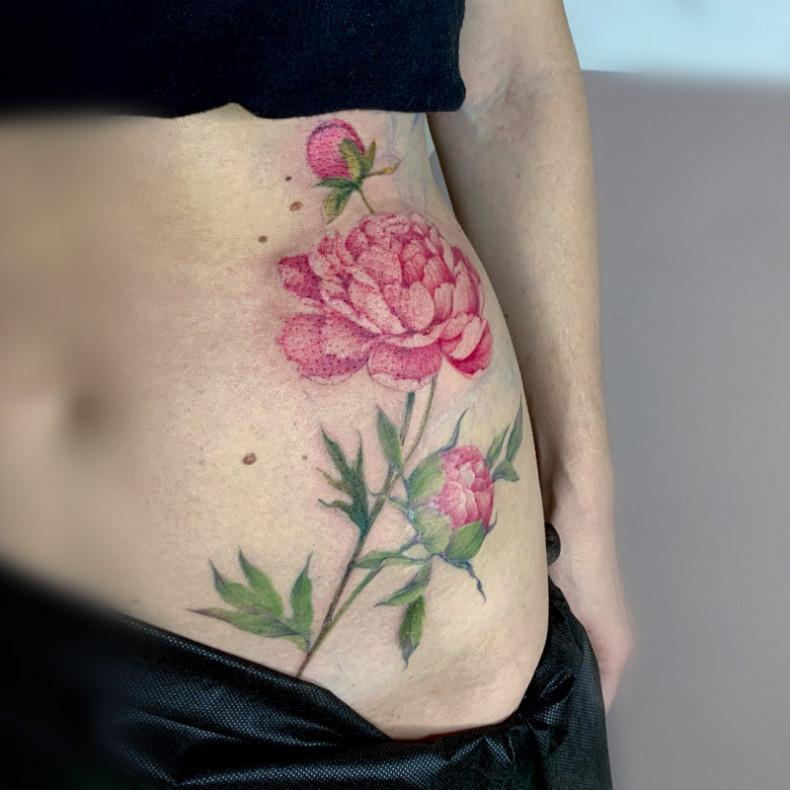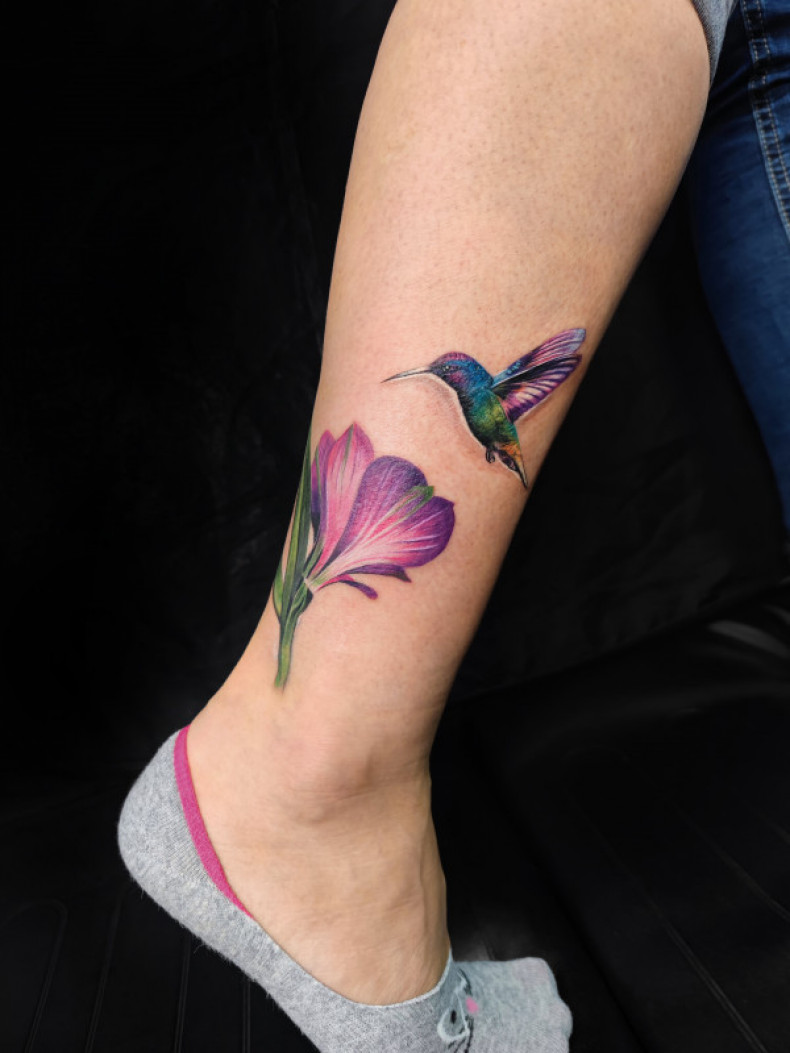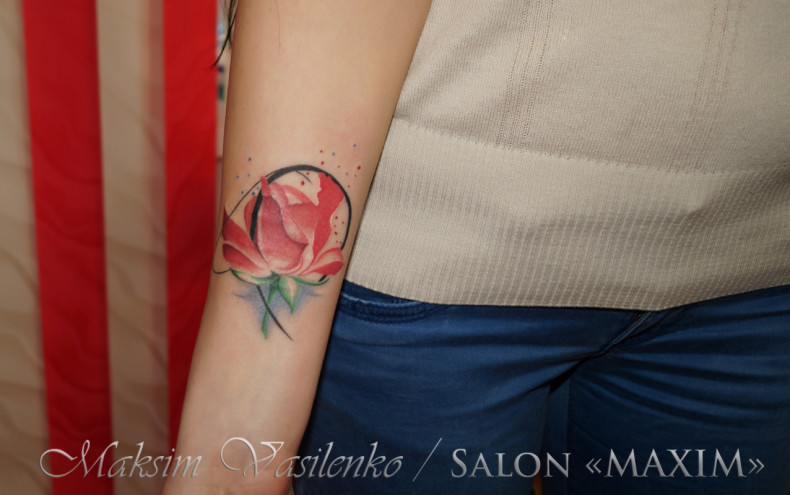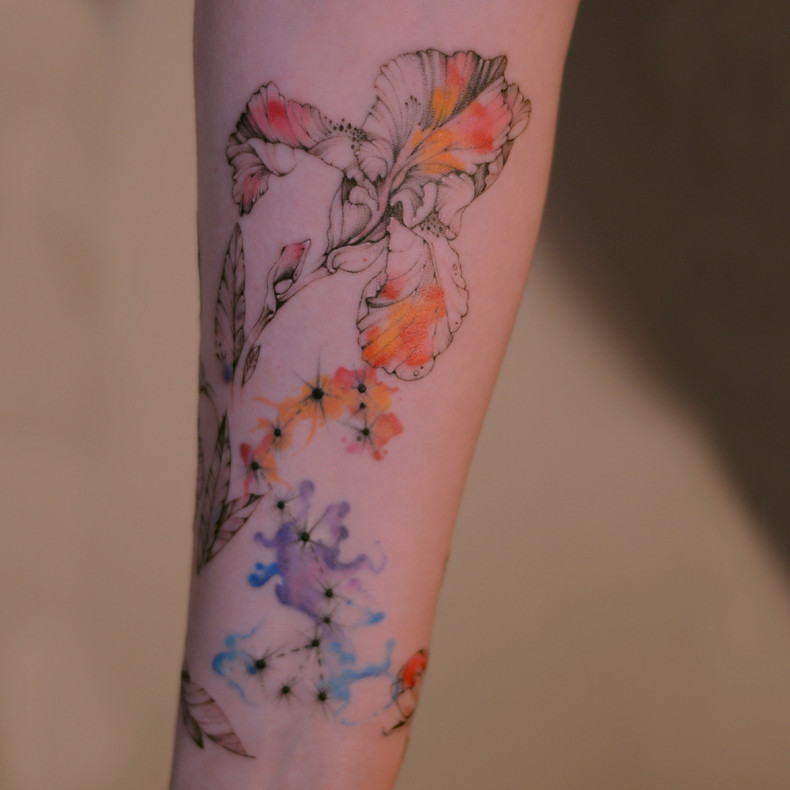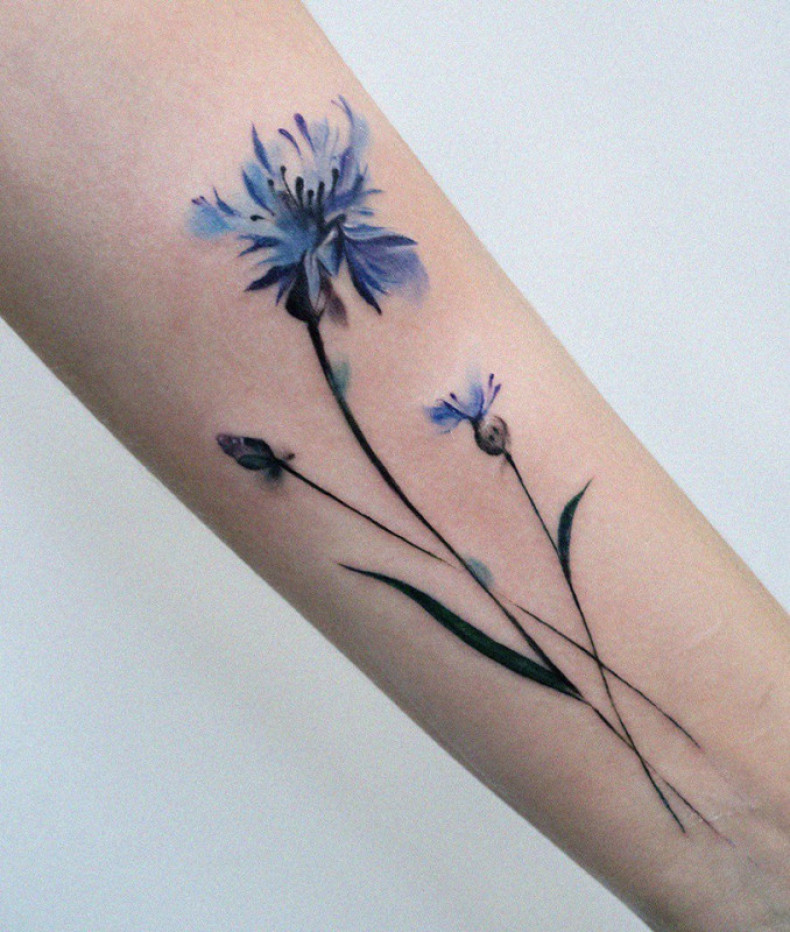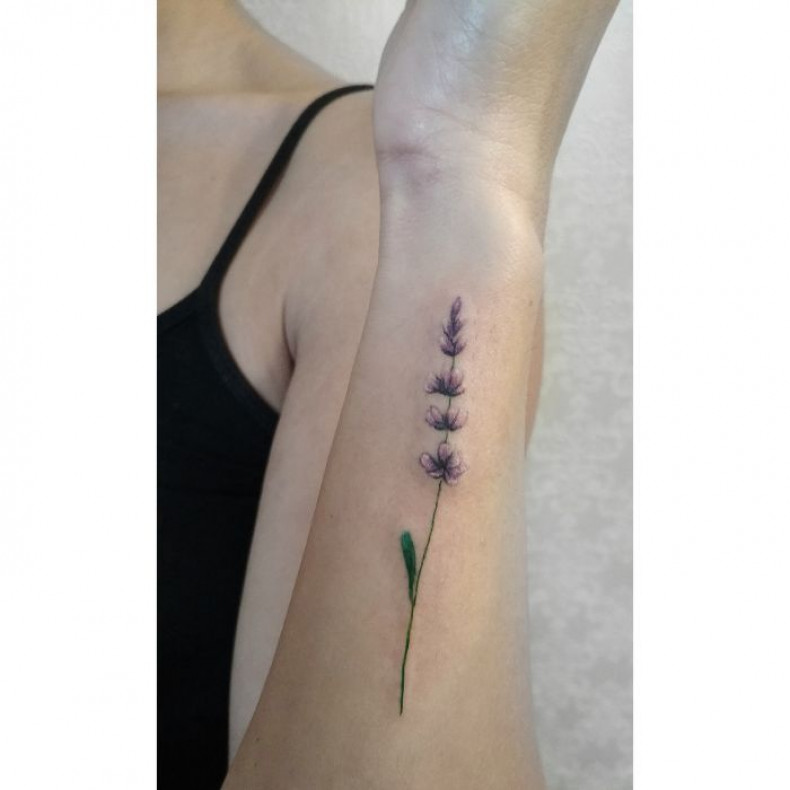Flower / watercolor Tattoo — 65 Ideas
#FlowerTattoo #WatercolorTattoo
It would seem that the most obvious motive for a woman’s tattoo is a flower. But it's not that simple. This topic is so vast that even a male sketch can contain entire plant scenes.
More
It would seem that the most obvious motive for a woman’s tattoo is a flower. But it's not that simple. This topic is so vast that even a male sketch can contain entire plant scenes.
Flower Tattoo Meanings
The first and most important meaning of a flower tattoo is beauty. The wearer of such a design prefers aesthetics and neatness in everything that his gaze touches. Buds have always served as a means of decorating holidays, rituals and the body.
By the way, rituals in which flowers participated were not always positive. So, in some countries calla lilies symbolize both the beginning of family life and mourning.
Another of the most extensive meanings of flowering is the joy of life, the birth of a new thing, the beginning of beginnings.
The image of a lotus, which comes from Eastern culture, is also multi-valued. It contains simultaneously the meaning of birth, death, and the feminine principle.
Death does not carry a negative connotation in Eastern cultures, so the lotus can safely be called a symbol of purity. Men also often use the Hawaiian Flower of Life in their designs.
Speaking about Slavic culture, let us remember the fern, which was used as a talisman. The fern not only protects from bad influences, but also contributes to the success of its owner in work, family and personal achievements.
Hot Flower Tattoo Ideas
Sketches of flowers in tattoos are perfectly combined with other images. The tandem of a mini flower drawing with an inscription made in a neat, thin font looks very beautiful. Buds are in harmony with insects and birds, especially in the watercolor technique, because nature itself provides inspiration for creating attractive sketches. Exotic lovers will love the image of a hummingbird hovering over a flower. It would be good to add patterns that do not carry any special meaning, but emphasize the beauty of the central image.
The most winning tattoo styles on this topic:
- Realism
- old school
- Japanese style
- Graphic arts
- Chicano
- Ornamental
There is simply no style that is categorically unsuitable for a flower tattoo.
Best Places for Flower Tattoos
There are no restrictions on body parts for applying buds. They look great anywhere, as long as the design is the right size. However, there are especially popular places:
- An excellent place is on the arm ; this place is chosen more often by men. Roses work well on the wrist and back of the hand, while lilies, peonies and other large flowers are best placed on the shoulder, where there is more skin area.
- A bud in a minimalist style on the collarbone will look very elegant, especially in combination with an elegant inscription.
- Large floral patterns are best placed on the leg, if, for example, decorating a woman’s thigh .
- Flowers around the chest and abdomen look great on girls.
- Symmetrical patterns on the back look beautiful, for example, a schematic lotus in the upper part of the spine.
- The winning place is the man's neck.
Flowers are an inexhaustible topic for tattoos. Their meanings, styles and motifs are so vast that anyone can find an image to their liking.
Watercolor tattoos bring an ethereal quality to body art, transforming skin into a living canvas that appears splashed with vibrant, flowing hues. Unlike traditional tattoos that rely on solid outlines and dense shading, watercolor tattoos mimic the fluidity and transparency of paint on paper, creating a dynamic, almost dreamlike effect. This style, which gained prominence around 2010, takes inspiration from the works of abstract painters like Helen Frankenthaler, who revolutionized the use of watercolors in the mid-20th century by letting pigments bleed and blend freely. As you explore the gallery of watercolor tattoos below, notice how artists use this technique to craft pieces that seem to shift and move, catching the light in ways that make them feel almost alive.
Fresh Waterclor Tatoo Ideas
When imagining your watercolor tattoo, consider designs that fully embrace the fluidity and unpredictability of this style. A tattoo of a blooming flower can transform into a cascade of petals dripping with color, or an animal, such as a fox or a hummingbird, could appear mid-leap, with colors trailing behind to mimic motion and energy. Think about incorporating abstract elements like ink splatters, geometric shapes, or fragmented lines that blend into the watercolor washes, adding layers of meaning and visual intrigue. An idea that remains largely unexplored is to mix watercolor effects with pointillism, where the soft blurs of color contrast with sharp, dotted elements, creating a tattoo that feels like a modern art piece on your skin. Another creative option is to depict cosmic scenes — like galaxies or nebulas — using watercolor techniques, giving them a dreamy, otherworldly feel.
The Meanings Behind Watercolor Tattoos
Watercolor tattoos are often celebrated for their beauty, but they also carry hidden meanings that resonate deeply with their wearers. The very nature of watercolor’s fluidity can symbolize impermanence and the acceptance of change, reflecting the Zen Buddhist idea of ‘wabi-sabi,’ which finds beauty in imperfection and transience. A watercolor design that appears to be “unfinished” or “bleeding” beyond its edges can represent the idea that life, like art, is an ongoing process that never truly reaches completion. In some cases, the specific colors used have personal significance; for example, blue hues may represent calmness and healing, while fiery reds and oranges can signify passion and resilience.
Dive into this collection and let these pieces inspire you to consider not just how a tattoo will look on your skin, but how it will move, change, and evolve with you over time.
Hide



